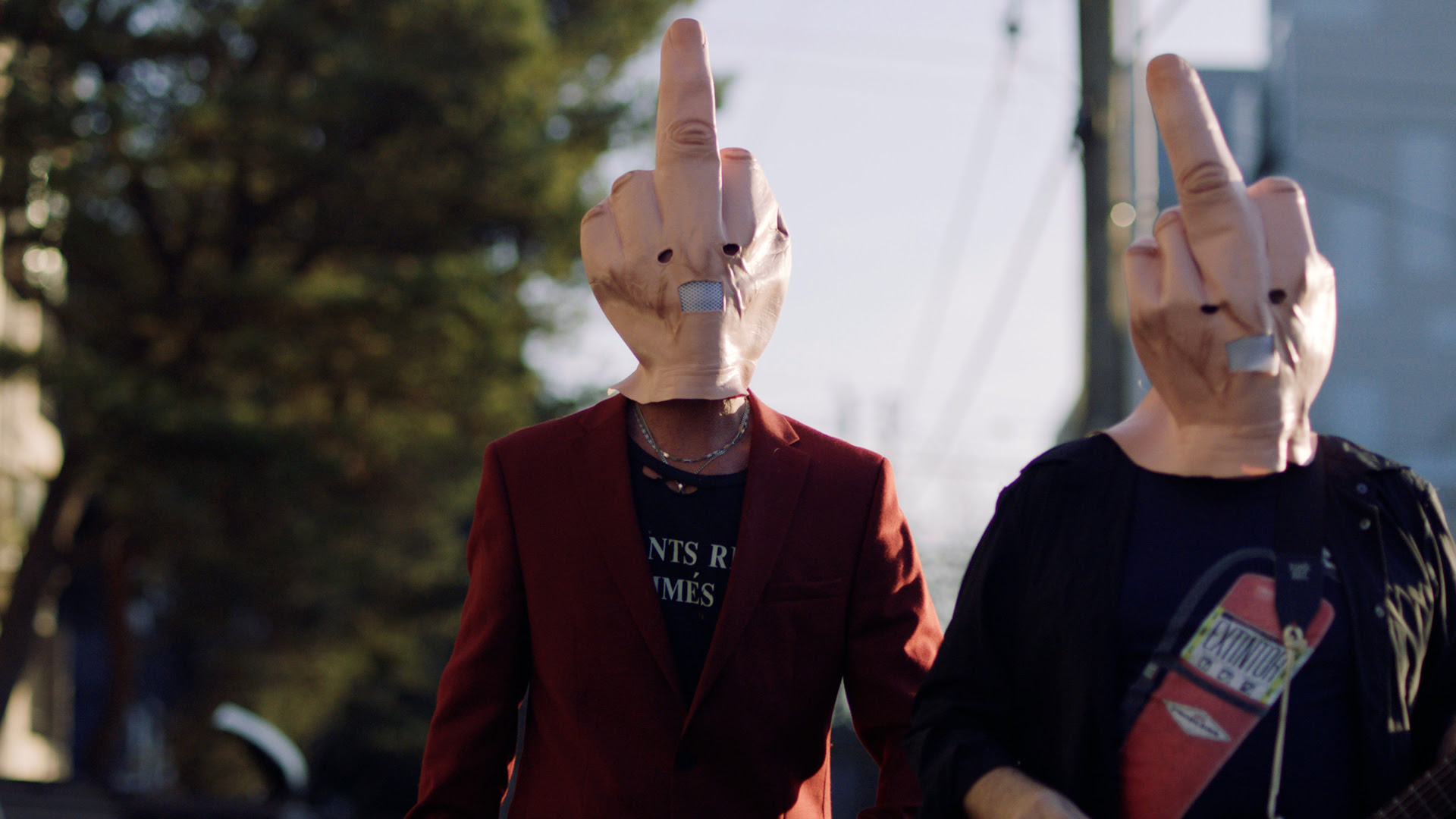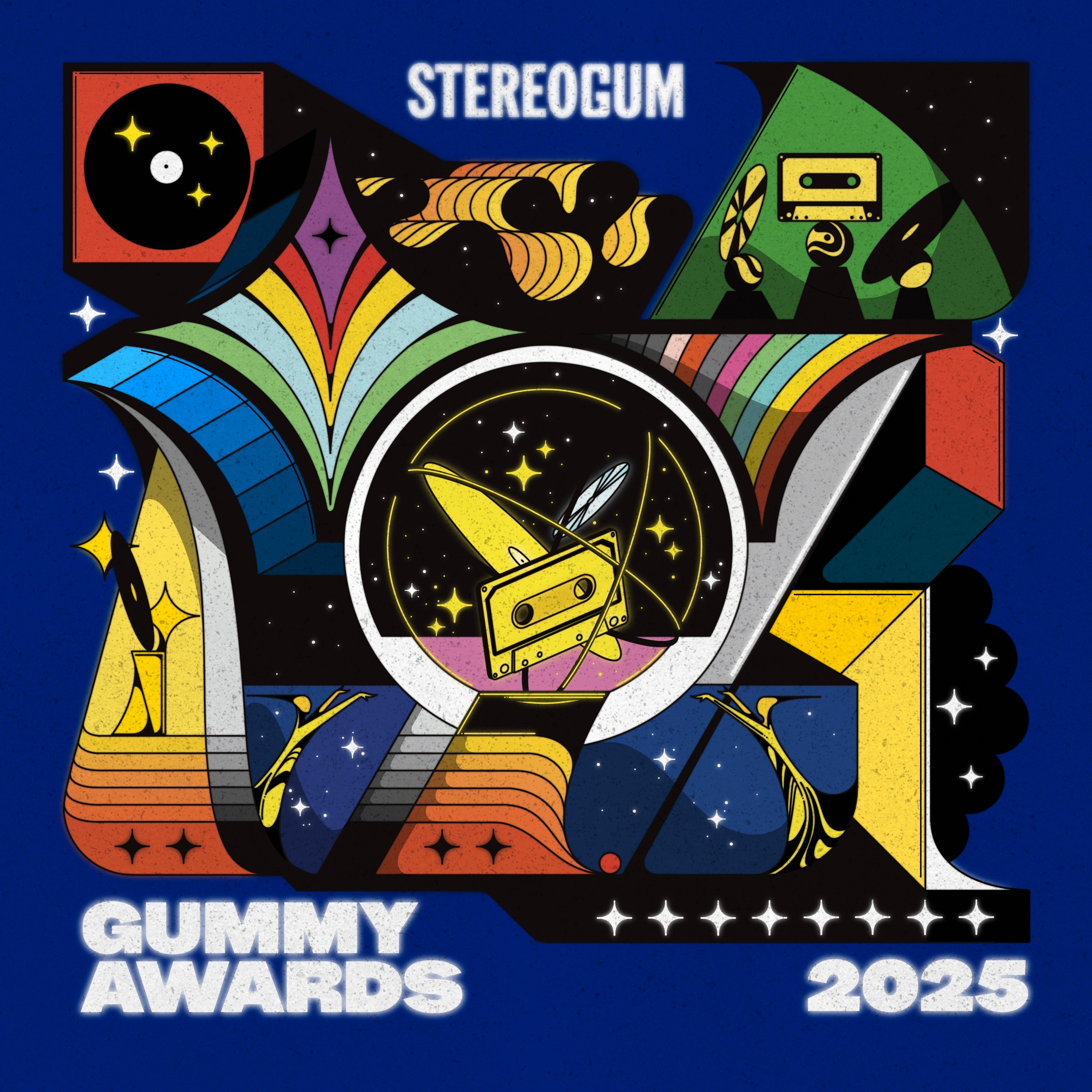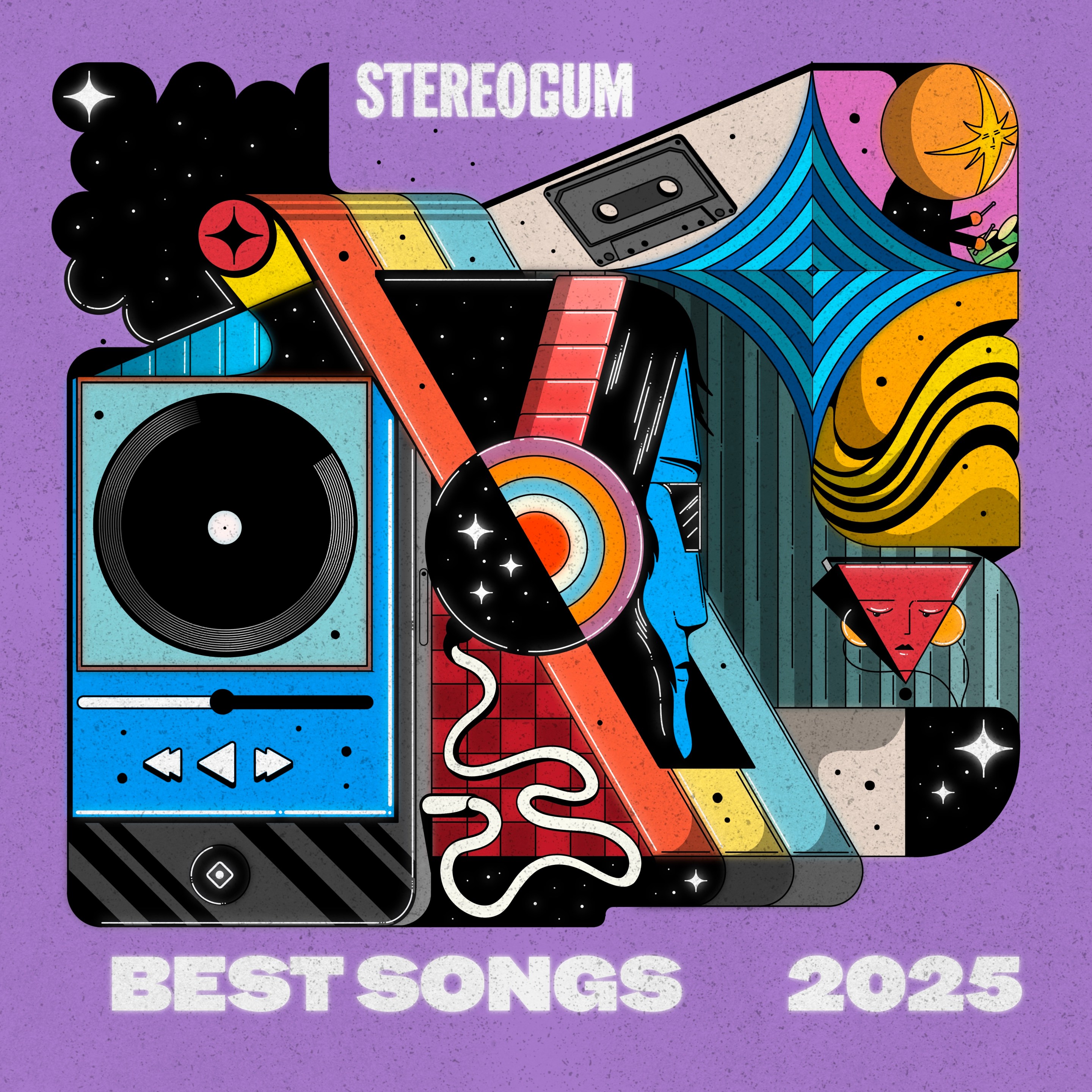In the second week of April, the legendary proto-punk band Max Creeps announced their breakup after over 40 years together. And for a couple days Twitter and Instagram were full of rock stars lamenting the band’s demise and sharing memories of gigs, including Billie Joe Armstrong, Henry Rollins, and Laura Jane Grace. Despite never releasing an album, the duo of Max Blastic and PC Bullshit had managed to influence generations of rockers.
There's just one problem: There's no evidence that Max Creeps ever existed. As the breakup announcement was quickly followed by an announcement that a Max Creeps album, Nein, would finally be released by Velocity Records on May 13, internet sleuths smelled a PR stunt, or at least a late April Fool's joke, and started to piece together clues. All signs pointed to Guns N' Roses bassist Duff McKagan, who had lamented the Max Creeps breakup on Instagram alongside bandmates like Slash and the Fastbacks' Kurt Bloch. Max Creeps are ostensibly from McKagan's hometown, Seattle, and one of the two voices on Nein bears a strong similarity to McKagan's voice, as heard on his two solo albums and GNR songs like "So Fine" and "Get In The Ring."
If Max Creeps is a hoax, it's a self-aware one. In fact, one of their best songs is an ode to hoaxes: "The Internet Killed Me" is a blistering 59-second track about the kind of death rumors that frequently spread on social media, false alarms about living celebrities like Morgan Freeman or Brad Pitt meeting a tragic end. "They chose to believe that I was dead no matter what I fuckin' said," snarls the voice that doesn't sound like Duff McKagan. (UPDATE: Max Creeps have responded to this article with statements denying they are a hoax band.)
Of course, pop music has a long history of hoaxes, aliases, fake backstories, and deceptive marketing. Sometimes the aim is to simply match the sound of a record to more camera-ready faces, as in the case of Milli Vanilli, the European pop duo who did not actually sing on their own hit album, and were eventually exposed and had to return their Grammy award. But here’s a chronological look back at some musical hoaxes where the intent was a bit more mischievous, moments when music industry insiders or established artists took on a new identity to try out new sounds or just try to go viral.
The Masked Marauders
Arguably the first hoax rock record was a case of the media wagging the dog. A 1969 issue of Rolling Stone featured a review of an album by the Masked Marauders, alleging that Bob Dylan and members of the Beatles and the Rolling Stones had recorded an album together, but their names could not be listed on the sleeve due to contractual obligations. The record didn't exist, and Greil Marcus wrote the review to parody the "supergroup" trend of recent albums like Blind Faith and Al Kooper's Super Session. But after the review ran and people started trying to buy the album, Rolling Stone editors decided to take the gag a step further and actually recruited some unknown California musicians to record it. The Masked Marauders was released by Warner Bros. and entered the Billboard charts before many consumers ever realized they'd been fooled.
Arnold Corns
David Bowie became famous for inhabiting different personas for his albums in the 1970s. But at the beginning of the decade, he toyed with creating music for a prefabricated band with someone else posing as the frontman, the 19-year-old costume designer Freddie Burretti. The band Arnold Corns, its name an homage to Pink Floyd's "Arnold Layne," released a single of "Moonage Daydream" and "Hang Onto Yourself" with Burretti's face on the cover, but Bowie performed all the vocals. The record flopped, and Bowie soon re-recorded both songs for his next album, 1972's The Rise And Fall Of Ziggy Stardust And The Spiders From Mars. This time, Bowie would play his new alias himself, but Freddie Burretti was still involved: He designed many of Bowie’s iconic Ziggy Stardust outfits.
Klark Kent
When Sting had trouble singing one of the early songs Stewart Copeland wrote for the Police, "Don't Care," the drummer decided to record it himself. With the Police still working on their breakthough, Copeland decided that his side project would be anonymous, choosing the name Klark Kent in homage to Superman's secret identity. And "Don't Care" actually entered the UK singles chart in 1978 a couple months before the Police charted with "Can't Stand Losing You." So the first time Sting, Stewart Copeland, and Andy Summers appeared on Top Of The Pops, they wore masks and anonymously performed as Klark Kent. Copeland released a Klark Kent album in 1980, but continued to deny any connection to the project as late as 1981.
Silicon Teens
In 1978, Daniel Miller founded Mute Records to release a single by his band the Normal, and the UK label soon built up a roster of pioneering acts including Depeche Mode, Einsturzende Neubauten, and the Birthday Party. But Miller coyly hid his involvement in one of Mute's other early signings. All of the music released by the new wave band Silicon Teens was performed by Miller, including two top 10 hits on the UK Indie singles chart, "Judy In Disguise" and "Just Like Eddie." But Frank Tovey of the Mute act Fad Gadget posed as the band’s frontman, and actors gave interviews as other members of the band.
Will Powers
Photographer Lynn Goldsmith created cover art for dozens of hit albums for artists including Patti Smith, Frank Zappa, and the B-52's. But when she made an album of her own in 1983, she assumed the identity of Will Powers. Pitching her voice down to sound male, Goldsmith filled the album Dancing For Mental Health with inspiring affirmations that satirized the self-help industry of the early '80s. Stars like Steve Winwood, Nile Rodgers, and Todd Rundgren pitched in to help create the music for eerily upbeat songs like "Kissing With Confidence," which became a UK chart hit.
The Blue Stingrays
In 1997, Epitone Records issued Surf-N-Burn, a decades-old lost album by a surf rock band called the Blue Stingrays that had played together in the '50s and '60s. The album included a campy surf guitar version of the theme from the James Bond film Goldfinger plus liner notes that detailed the history of the Blue Stingrays and why the members of the band chose to remain anonymous. In reality, they were Tom Petty’s backing band the Heartbreakers, jamming in the studio in between '90s tours with Petty.
Chris Gaines
After a decade of reigning as country music's biggest superstar, Garth Brooks got the itch to try new things, like acting and making a pop-rock record. Brooks devised a clever way to tie those two ambitions together: He created Chris Gaines, a brooding rock star character with shaggy black hair and a soul patch, and began planning a feature film, The Lamb, in which he'd play Gaines. There was never an attempt to fool the public about who Chris Gaines was -- the album was billed as Garth Brooks In... The Life Of Chris Gaines. But there was still something theatrically surreal about how it was all presented to the public. Brooks even hosted Saturday Night Live in 1999 with "Chris Gaines" as the musical guest -- in a hilarious bit of TV trickery, a pre-taped Brooks gave a "live" introduction of his alter ego:
— SNL Hosts Introducing the Musical Guest (@snlhostsintro) November 18, 2021
Gaines' debut single "Lost In You" peaked at #5 on the Hot 100, giving him the crossover hit that Garth Brooks had always rigorously avoided to keep his country credibility intact. But the Gaines album only went double platinum, which was disappointing for a guy with multiple diamond albums. The Lamb was never filmed, and a year after the Gaines debacle, Brooks announced his plans to retire from recording and performing (though of course he never stayed retired).
The Network
Unsurprisingly, one of the musicians who saluted Max Creeps on Instagram last month tried to pass off a secret band of their own: Green Day frontman Billie Joe Armstrong. In 2003, Armstrong's label Adeline Records released the debut album by the Network, a band that traded in synth-driven new wave throwbacks. But fans quickly realized that the Network was a secret side project featuring all three members of Green Day operating under masks, fake accents, and fake names: Armstrong was "Fink," Mike Dirnt was "Van Gough," and Tre Cool was "The Snoo." The Network's 2003 album Money Money 2020 was a way for the band to blow off steam and depart from Green Day's signature sound during the prolonged and difficult sessions for 2004's American Idiot. But the band kept up the ruse as long as they could, with members of Green Day and the Network even making hostile comments about each other to the press. And in 2008, Green Day released another playful album under an alias, this time as the throwback garage rock band Foxboro Hot Tubs. By the time the Network returned for a second album in 2020, Dirnt had confessed the truth in an interview, but the band continued wearing the masks and using their Network aliases.
Platinum Weird
Platinum Weird appeared out of thin air in the 21st century with a backstory that placed their origins in the mid-'70s. A half-hour VH1 special about the band explained that Dave Stewart had started Platinum Weird with singer Erin Grace prior to his '80s success in Eurythmics, and several websites popped up burnishing this fictional history. But this elaborate narrative had been cooked up by Interscope's Jimmy Iovine as a way to market Stewart's recent collaborations with singer-songwriter Kara DioGuardi, who'd penned hits for Ashlee Simpson and Hilary Duff. Platinum Weird's "lost" 1974 album Make Believe, in reality recorded in 2006, came and went with little notice, and DioGuardi went on to greater fame as a judge on American Idol.
QT
PC Music founder A. G. Cook and frequent collaborator SOPHIE's hyperpop aesthetic, emphasizing the slickness and artificiality of pop music in subversive and subtly experimental ways, probably reached its apex with the introduction of QT in 2014. Performance artist Hayden Dunham posed as pop singer QT for the cover of the single "Hey QT," a live lip sync performance, and the song's video, which doubled as an ad for the fictitious DrinkQT energy drink. But Harriet Pittard, who makes music under the name Zoee, had actually recorded the song's vocals, though her voice was pitched up so dramatically that it was unrecognizable. "Hey QT" turned out to be a one-off, as everyone involved quickly moved on to other projects -- and just last year Dunham launched a solo career under the name Hyd.
Max Creeps' Nein is out 5/13 via Velocity.







